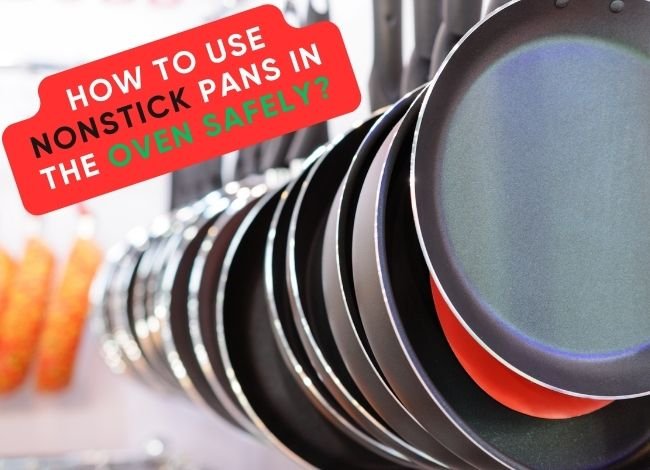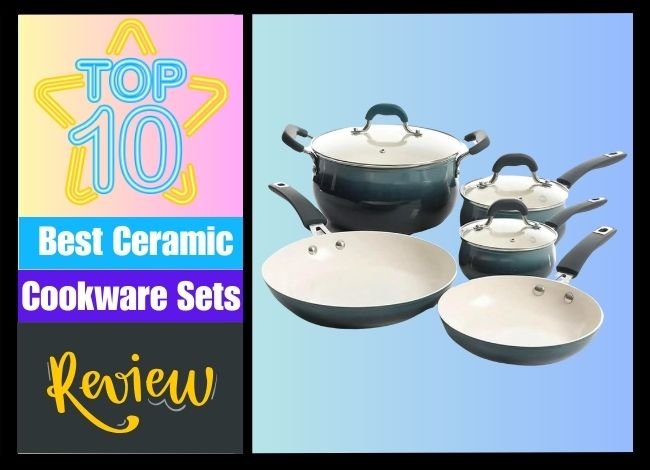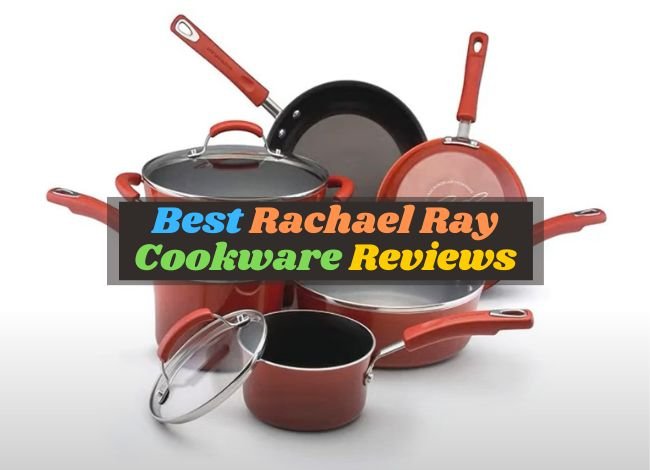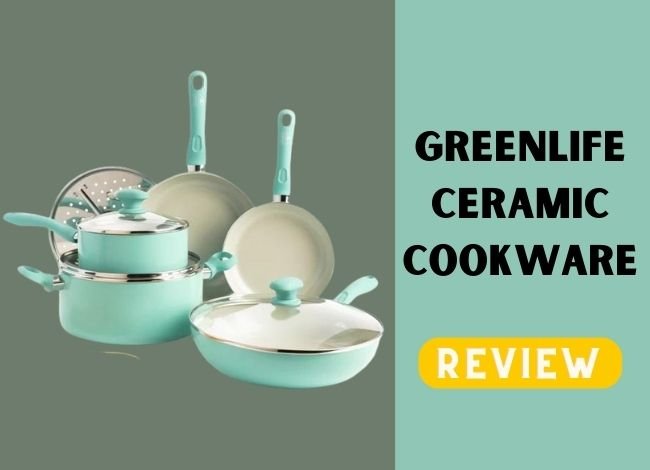Last Updated on February 7, 2024
Nonstick pans have revolutionized the way we cook, offering unparalleled convenience and ease in the kitchen. They allow for healthier cooking with less oil and ensure that food releases effortlessly from the surface, making cleanup a breeze.
However, when it comes to using nonstick pans in the oven, there are essential considerations and safety guidelines that must be adhered to. This article will delve into the nuances of safely using nonstick pans in the oven, addressing common questions and providing valuable insights to ensure your cooking experience is enjoyable and safe.
Are All Nonstick Pans Oven-Safe?
The question of whether all nonstick pans are oven-safe is a crucial one for home cooks who wish to expand their culinary repertoire. The short answer is no, not all nonstick pans are created equal when it comes to oven use. The oven safety of a nonstick pan largely depends on its construction materials and design. Most nonstick pans are coated with polytetrafluoroethylene (PTFE), commonly known as Teflon. While PTFE is safe for cooking at regular stovetop temperatures, it can start to degrade and release harmful fumes if heated above 500°F (260°C). Therefore, checking the manufacturer’s specifications before using a nonstick pan in the oven is essential.
Additionally, the handle material plays a significant role in determining a pan’s oven safety. Pans with metal handles are generally more oven-safe than those with plastic or silicone handles, which may melt or degrade at high temperatures. Some nonstick pans are specifically designed to be oven-safe, featuring materials and construction that can withstand higher temperatures. It’s always recommended to refer to the product’s user guide for temperature limitations and to ensure you use your cookware within the safe operating range. Ignoring these guidelines can damage your pan and pose safety risks.
How High Can You Heat a Nonstick Pan in the Oven?
Determining how high you can heat a nonstick pan in the oven is crucial for maintaining the pan’s integrity and ensuring your food’s safety. As mentioned earlier, the safety threshold for heating nonstick pans in the oven largely depends on their construction and the materials used. Generally, most quality nonstick pans that are deemed oven-safe can withstand temperatures of up to 350°F to 400°F (177°C to 204°C). However, some high-end models are designed to tolerate temperatures as high as 500°F (260°C), making them suitable for a broader range of oven-cooking tasks.
It is imperative to consult the manufacturer’s guidelines for the specific temperature limit of your pan. Exceeding this limit can compromise the nonstick coating, leading to its deterioration and potentially releasing toxic fumes. Furthermore, prolonged exposure to high temperatures can warp the pan’s base, affecting its performance and lifespan.
For recipes requiring higher oven temperatures, consider using cookware specifically designed to handle such conditions, such as cast iron or stainless steel pans. Always use oven mitts when handling the pan, as the handle can become extremely hot. By adhering to these guidelines, you can enjoy the versatility of using your nonstick pan in the oven while ensuring its longevity and the safety of your meals.
Why Would I Use a Nonstick Pan in the Oven?
Using a nonstick pan in the oven can be a game-changer for home cooks looking to expand their culinary repertoire. The primary reason to use such a pan in the oven is for its convenience and versatility. Nonstick pans are known for their exceptional ability to prevent food from sticking, making them ideal for cooking a wide range of dishes, from frittatas to baked goods. Transferring a nonstick pan from the stovetop to the oven can create one-pot meals, simplifying preparation and cleanup.
This seamless transition is particularly useful for dishes that require initial searing on the stovetop before being finished in the oven, such as steaks, skillet cookies, or layered casseroles. Additionally, using nonstick cookware in the oven can help ensure that delicate foods, like flaky fish or tender pastries, come out perfectly cooked without sticking to the bottom of the pan. The key to safely and effectively using nonstick pans in the oven lies in understanding the temperature limitations of the pan and ensuring it is oven-safe.
What Can You Make with a Nonstick Pan in the Oven?
The versatility of nonstick pans makes them suitable for a vast array of oven-baked recipes. These pans are perfect for dishes that benefit from easy release without the need for excessive oil or butter, promoting healthier cooking. For instance, you can bake stunning frittatas or omelets in the oven, where the even heat helps them puff up beautifully.
Nonstick pans are also ideal for making baked pasta dishes, such as lasagna or macaroni and cheese, where cheese and sauce can stick to regular pans. Baking savory dishes like roast chicken or vegetables becomes hassle-free since the nonstick surface ensures that the skin and edges don’t adhere to the pan. Desserts, too, are an excellent match for nonstick pans in the oven.
Think of moist brownies, upside-down cakes, or skillet cookies that easily slide out of the pan, preserving their perfect shape and texture. When using a nonstick pan in the oven, it’s crucial to consider the recipes’ temperature requirements and ensure they align with the pan’s heat tolerance to maintain the nonstick coating’s integrity and safety.
Conclusion
Incorporating a nonstick pan into your oven-cooking arsenal can significantly enhance your culinary experience by offering a blend of convenience, versatility, and health benefits. By understanding the temperature limitations and ensuring your pan is oven-safe, you can explore a wide range of dishes, from savory meals to delectable desserts, all with the ease of nonstick cooking.
Remember, proper care is key to longevity with nonstick cookware, including avoiding high heat and using nonmetallic utensils to preserve the surface. Embrace the flexibility of using nonstick pans in the oven and unlock the potential of effortless, delicious meals that will impress you.
Frequently Asked Questions
- Is it safe to use all nonstick pans in the oven?
- Not all nonstick pans are oven-safe. Check the manufacturer’s guidelines for temperature limitations.
- What temperature can nonstick pans withstand in the oven?
- Most nonstick pans can withstand temperatures up to 350-500°F, but always refer to the manufacturer’s instructions.
- Can I use a nonstick skillet to bake a cake?
- Yes, as long as the skillet is oven-safe and the recipe’s temperature is within the pan’s limit.
- How do I know if my nonstick pan is oven-safe?
- Look for an oven-safe symbol or check the product’s specifications in the manual or manufacturer’s website.
- Can using a nonstick pan in the oven damage its coating?
- Exceeding the recommended temperature can damage the coating. Follow the manufacturer’s temperature guidelines to prevent this.
- Can I put a nonstick pan with a silicone handle in the oven?
- Yes, if the pan is labeled oven-safe. However, temperature limits may be lower due to the handle material.
- What should I do if my nonstick pan smokes in the oven?
- Remove the pan safely using oven mitts and let it cool. Excessive smoke can indicate overheating, which may damage the pan.
- Can I use metal utensils in the oven with my nonstick pan?
- Using wooden or silicone utensils is best to avoid scratching the nonstick surface.
- How do I clean my nonstick pan after using it in the oven?
- Let the pan cool completely, then wash it by hand with mild soap and a soft sponge to preserve the coating.
- Can I broil with a nonstick pan in the oven?
- Broiling is not recommended for nonstick pans as the high heat can damage the nonstick coating.




